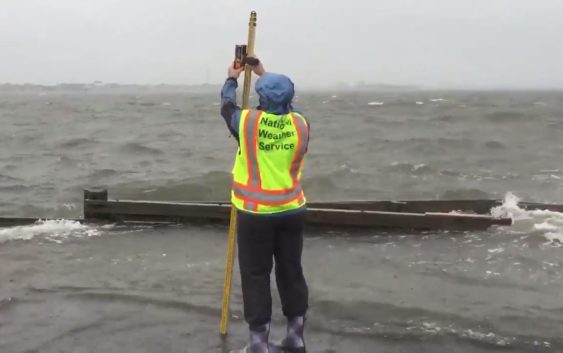- Some evacuations lifted as crews work to contain massive wildfire in Bastrop County
- Storm in the Caribbean is on a track to likely hit Cuba as a hurricane
- 400-acre wildfire near Bastrop State Park leads to evacuations
- Some evacuations lifted as crews work to contain massive wildfire in Bastrop County
- Crews work to contain massive wildfire in Bastrop County ahead of severe weather threat Monday night
Florence floods damaged thousands more homes because of sea level rise, study shows

If the ocean was at the same level it was in 1970, thousands of homes could have been spared storm surge flooding from Hurricane Florence, a recent study shows.
Scientists at First Street Foundation (FSF) — a technology nonprofit dedicated to increasing awareness of sea level rise — used data from the National Oceanic and Atmospheric Administration, U.S. Geological Survey, the National Weather Service, local governments, the U.S. Department of Agriculture, U.S. Army Corps of Engineers and more to determine sea levels and the number of homes affected by Florence storm surge.
Their work shows that sea level rise since 1970 led to greater damage — 11,000 more homes affected, they say.
Storm surge, or the sea rising because of a weather event, affected more than 51,000 homes in the Carolinas and Virginia. Scientists with FSF considered a home affected by Florence storm surge if water pushed over at least 25 percent of the property.
The scientists modeled the same storm surge using sea level observed in 1970 and discovered that if the sea level had not gone up, 11,000 homes might have been spared, “signaling that sea level rise is responsible for these additional impacts,” FSF said in its report.
FSF scientists used data from NOAA and USGS river gauges to determine storm surge from Florence.
“Even though the impact of Hurricane Florence continues to be felt, we already know that sea level rise has made the damage significantly worse, as observed with other recent storms,” Steven McAlpine, FSF head of data science, said in the report.
NOAA data on tides for the Carolinas show an average rise in sea level of about 6 inches since 1970.
Higher sea levels lead to worse storm surge, since a hurricane or other storm has more water available to push up onto land, according to FSF’s report. As the water floods the land, it also reduces friction that could slow the surge down. Higher sea levels, therefore, mean more and faster flooding.
There are also far more homes in the way of sea level rise and storm surge flooding today than there were in 1970.
“Since the 1970s, much of the region’s wetlands, farms, and conserved areas have been developed for urban use,” the FSF report said. “Many of the homes built in these areas were impacted by Hurricane Florence’s storm surge.”
If we still had the same number of homes as we did in 1970, the FSF report showed that only 23,000 homes — instead of 51,000 — would have been affected by storm surge flooding from Florence.
Sea levels are expected to continue rising, according to the U.S. Army Corps of Engineers. The study found that the sea level expected by 2050 — about 15 inches higher than today’s levels — could lead to double the impact from a storm like Florence.
Where Florence affected about 51,000 homes today, the same storm in 2050 would have affected 102,000 homes, the study said.
“With sea levels and coastal development on the rise, the impacts of hurricane storm surge will only get worse,” Matthew Eby, FSF executive director, said in the report. “The time to rethink America’s sea level rise and adaptation strategy is now.”